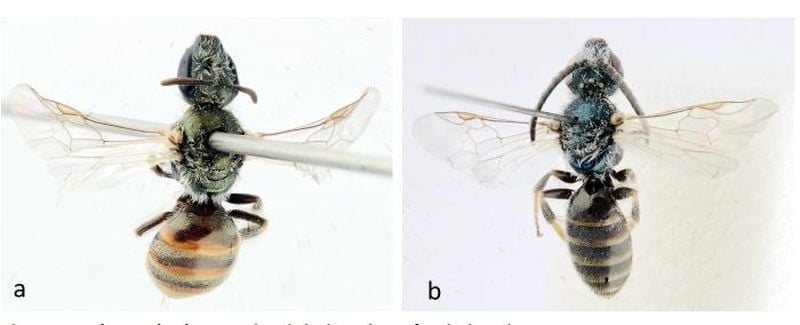New bee joins over 1,000 bee species already discovered in Israel.
By Yakir Benzion, United With Israel
Most of us already know that bees are a critical member of the food chain, working hard to pollinate flowers so we can get lots of fresh fruit and, of course, enjoy lots of honey.
With bee populations in distress in many places in the world, it’s good news when right in your backyard you find a new type of bee being, well, busy as bees.
Researchers from the Hebrew University of Jerusalem stumbled upon a new species of bee, joining the approximately 1,100 known bee species that are known to live in Israel.
As in many places in the world, changing the habitat can lead to a significant decrease in the variety and abundance of pollinators, such as bees and habitat rehabilitation is one of the important tools in conserving pollinators, and biodiversity in general.
So when the Alexander River National Park was established, effort was put into reversing the effects of road construction and pollution on the area.
The researchers examined the effects of the restoration efforts of what is considered a rare habitat in the park, which is located in the central coastal plain of the Sharon area north of Tel Aviv, and in their study by chance found the new insect. They published their findings this week in the Belgian Journal of Entomology.
The new type of bee lives in an area characterized by sand dunes typical of Israel’s central coastal plain and non-native Eucalyptus trees that were planted in the mid 1960s.
“We found that there are many significant changes both in the characteristics of the habitat and the food and nesting resources it provides for the bees, and in the bee group itself,” said doctoral student Carmit Levy. “In general, one can be optimistic – one can see an improvement in the condition of the wild bee group following rehabilitation and restoration of the sandy habitat.”
The new bee has the Latin species name “Lasioglossum dorchini” – or dorchini wasp – dedicated by the researchers to Achick Dorchin, the collection manager of bees at the Steinhardt Museum of Natural History at Tel Aviv University who discovered the first specimen the researchers examined.
